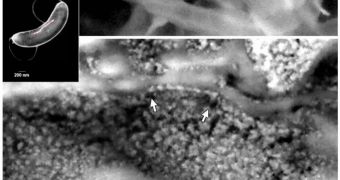More than two decades after the discovery of the meteorite ALH84001, the oldest to have arrived to Earth from Mars, scientists have not yet come to a consensus as to whether the rock bears signs of past life on the Red Planet.
The two sides of the argument continue to produce contradictory papers in large numbers, each of them arguing and bringing evidence to refute the others' point of view.
On one side, experts believe that the rock carried with it signs of organisms that may have lived on Mars billions of years ago, whereas the other side believes that evidence of this is make-belief.
“The meteorite is so old that if Martian life existed back then, it probably floated by the rock at some point. But did it leave any record?” asks University of Arizona expert Timothy Swindle.
The scientific community does agree that the rock came from Mars, even if it took more than a decade for that to be established. It was originally found in 1984, and the first announcement that it contained fossilized life forms was published in 1996.
Estimated to have formed about 4 billion years ago, the rock was most likely ejected from the Red Planet by a powerful asteroid impact, and made its way here after millions of years of space travel.
ALH84001 is therefore “our only hope to understand what Mars was like at this time period,” says Lunar and Planetary Institute expert Allan Treiman.
After scientists first published papers to support the theory that life once existed on Mars, other experts were quick to take their arguments apart, saying for example that the so-called nanobacteria found on the meteorite were in fact patches of coating materials.
These materials are used when researchers prepare samples for testing with electron microscopes. An uneven distribution can lead to misinterpretation of the results, critics said.
But, regardless of the intensity of the debate, one of the main aspects that really stands out about these discussions is the good that they do to the scientific community, by training experts into recognizing what could pass as signs of life on another planet, and what could not.
“It was good science. It challenged people to really think about what would count as evidence of life on Mars,” says Swindle.
If other similar space rocks are found, or if future telescopes pick out similar signs on exoplanets, scientists will have a way to gage the significance of whatever is passed as evidence for life elsewhere in the Universe.
At this point, the majority of space researchers believe that life exists elsewhere in the Universe, in whichever form. The issue is now finding and analyzing it, Space reports.

 14 DAY TRIAL //
14 DAY TRIAL //